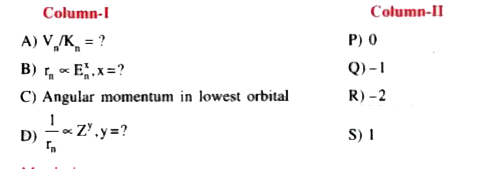Text Solution
Verified by Experts
The correct Answer is:
|
Topper's Solved these Questions
ATOMIC STRUCTURE
AAKASH SERIES|Exercise Level - II (Type-I) (Practice sheet - 2 (Section-A : More than one correct answer type questions))|5 VideosView PlaylistATOMIC STRUCTURE
AAKASH SERIES|Exercise Level - II (Type-I) (Practice sheet - 2 (Section - B : Linked comprehension Type questions))|5 VideosView PlaylistATOMIC STRUCTURE
AAKASH SERIES|Exercise Level - II (Type-I) (Lecture Sheet - 2 (Section - B : Linked comprehension Type questions))|5 VideosView PlaylistAROMATIC HYDROCARBONS
AAKASH SERIES|Exercise OBJECTIVE EXERCIES - 3 (RECENT AIPMT/NEET QUESTIONS)|10 VideosView PlaylistCHEMICAL BONDING
AAKASH SERIES|Exercise OBJECTIVE EXERCISE -3 (RECENT AIPMT/NEET QUESTIONS )|39 VideosView Playlist
Similar Questions
Explore conceptually related problems
Knowledge Check
A
B
C
D
Submit
A
B
C
D
Submit
A
B
C
D
Submit
Similar Questions
Explore conceptually related problems
